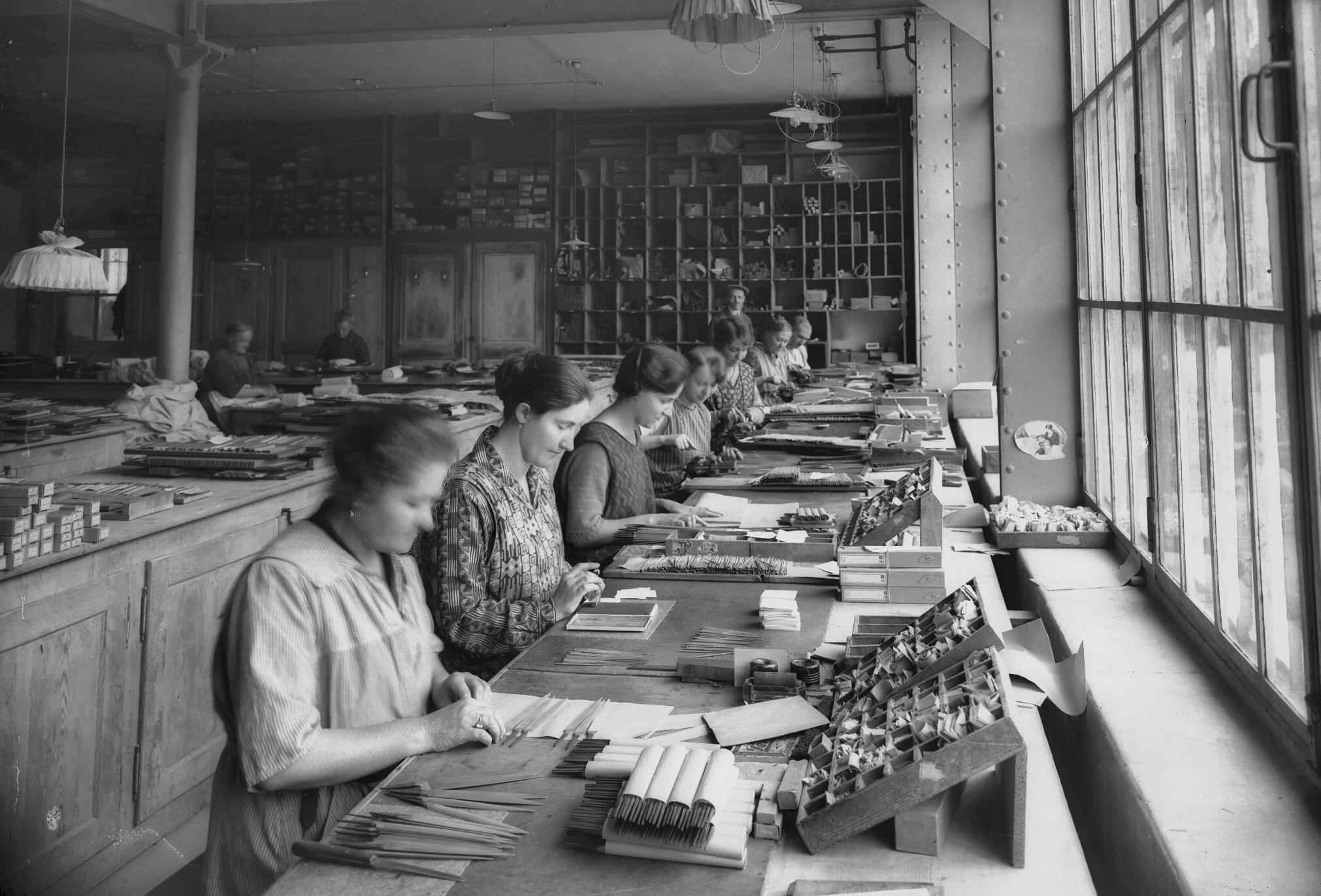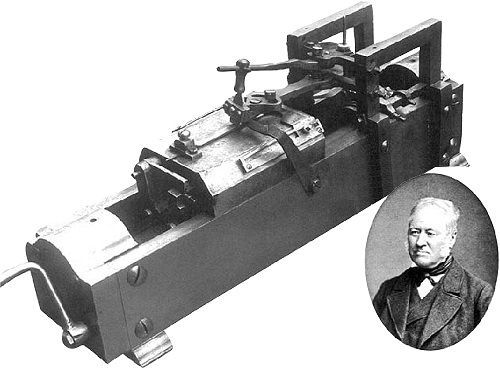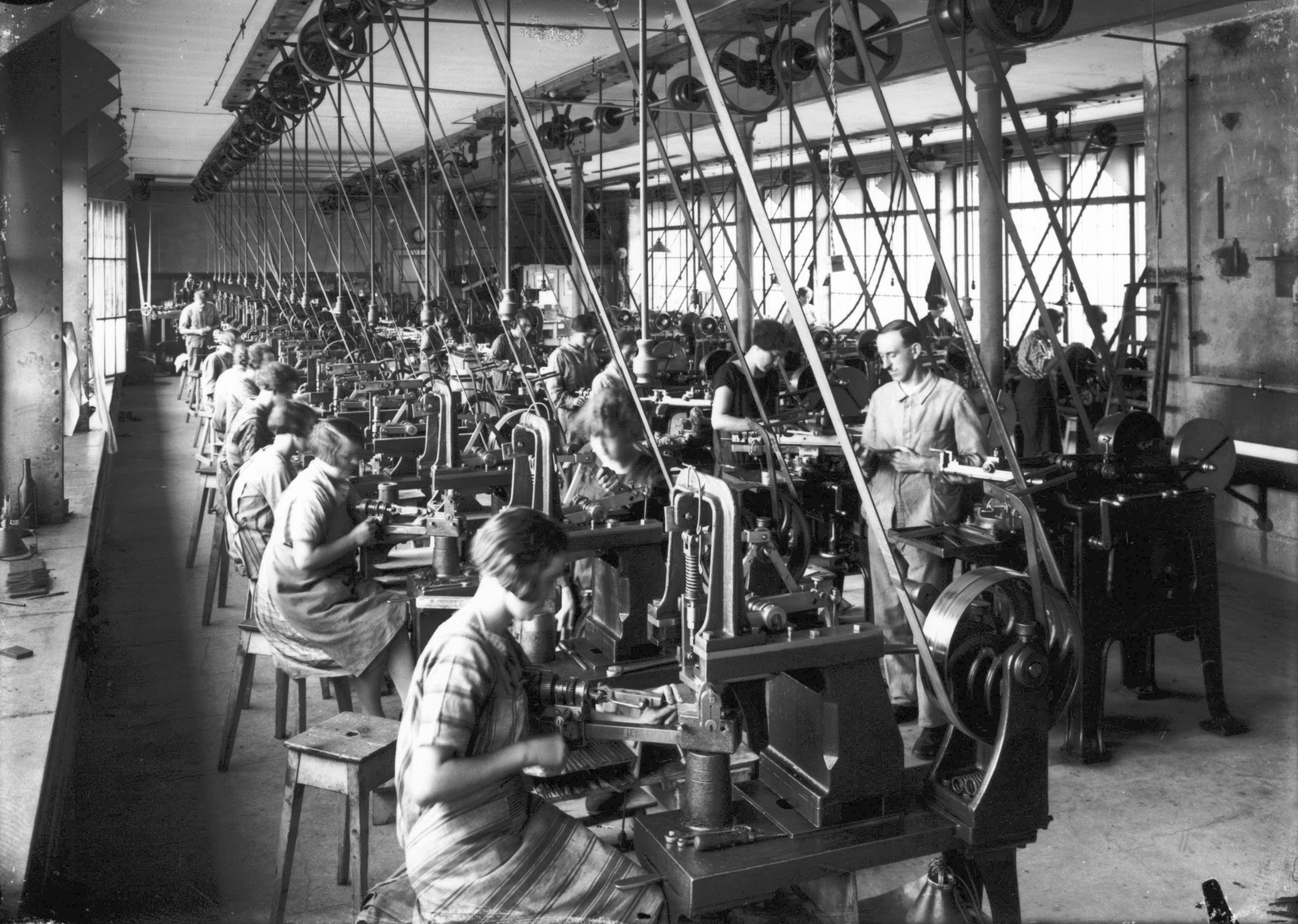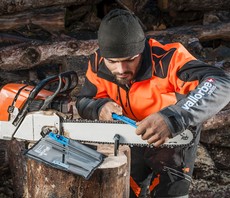Precision Tools Factory since 1899
From iron…
Situated in a valley of the Jura Mountains, Usines Métallurgiques de Vallorbe has close ties to the history of the Vallorbe district. Three hundred years BC, blacksmiths were already mining the iron ore available in the region.
The first factories were built along the waterfront by the end of the 13th century. Along the river Orbe, the prior in the village of Romainmôtier commissioned a machine that was still largely unheard of at the time : the hydraulic saw, used to work wood and iron ore. The monks set up an iron mine, which brought the mining industry to Vallorbe. This laid the foundations for activities related to the steel industry and led to an increase in the number of forges.
At the end of the 15th century, forging and casting processes were thriving in Vallorbe, bringing in their wake the development of other metalwork sectors.
A growing number of Vallorbe inhabitants worked in metallurgy, blacksmithing and nail manufacturing. These activities led to the emergence of other sectors such as locksmithing, arms manufacturing and, finally, watchmaking.
In the early 19th century, 70% of workers were employed in an iron-related field. After the boom of the nail manufacturing industry in the 18th century, it was the production of files, first for the watchmaking industry and then for other sectors, that really took off. Cutting files provided farmers in the region with an additional source of work during the winter. It is against this background of intense steel-related activity that Usines Métallurgiques de Vallorbe was born.

… to the file
Despite the concentration of refineries and large forges in Vallorbe, small-scale metallurgy continued to prosper in numerous small workshops. The emergence of the railway, followed by its expansion, created a new activity sector in Vallorbe from the 19th century : the manufacture of files.
From 1740, the coal shortage in the Joux Valley of the Jura Mountains forced cutlers, armourers and nail manufacturers to gradually turn towards watchmaking and cutting semi-precious stones.
Files were closely linked to the growth of watchmaking as they are a key tool in the production and repair of watches. The heirs to Vallorbe's expertise in metal-working, watchmakers were adept at forging and tempering tools – a skill which would ensure the precision and reputation of the Swiss watch.
In 1836, F. L. Grobet invented a machine for cutting files in Vallorbe. This marked the beginning of industrialisation of the production process.

Sixty six years later, in 1899, Vallorbe's three largest factories, Borloz & Noguet-Borloz, Antoine Glardon & Cie and Grobet SA merged to create Usines Métallurgiques de Vallorbe.

Scientific and technical advances, such as running water, electrical lighting, the telephone, the automobile, the aircraft, etc. transformed daily life. These developments contributed to the growth of Usines Métallurgiques de Vallorbe.
The strength of Usines Métallurgiques de Vallorbe lies in its ability to adapt to new mechanised and automated production techniques, whilst simultaneously promoting manual skills.
In 1992, Usines Métallurgiques de Vallorbe was awarded ISO 9001 certification.




